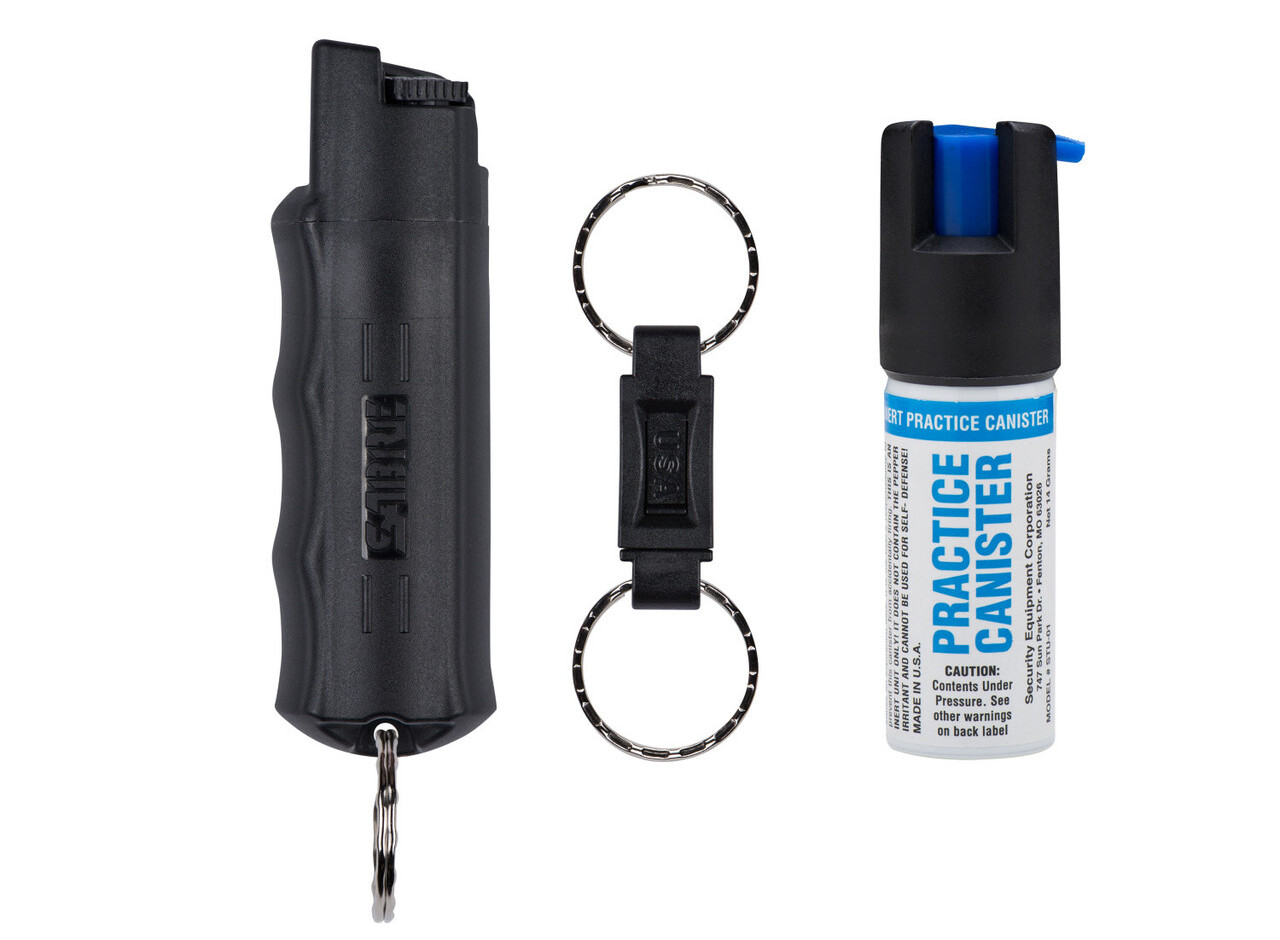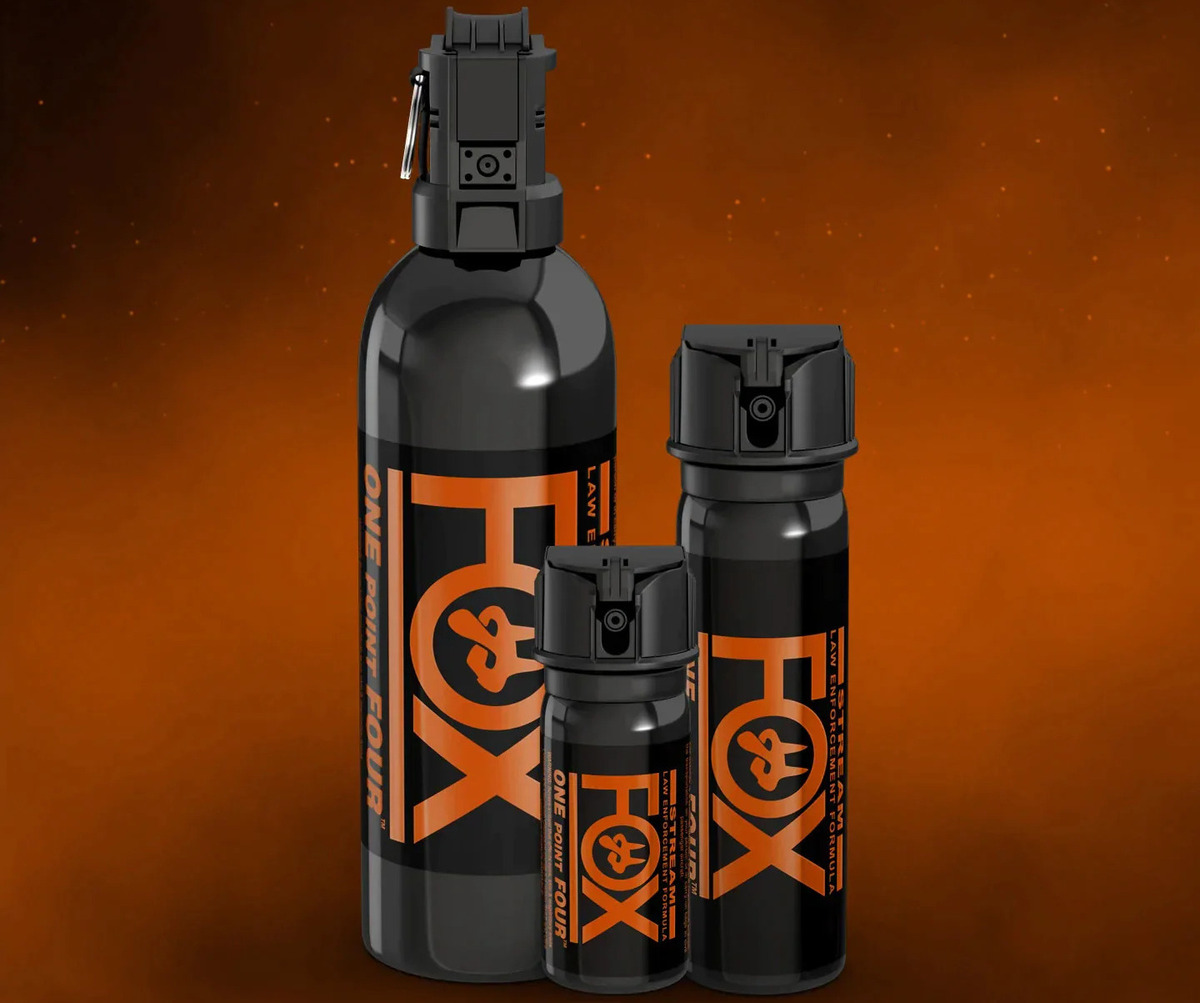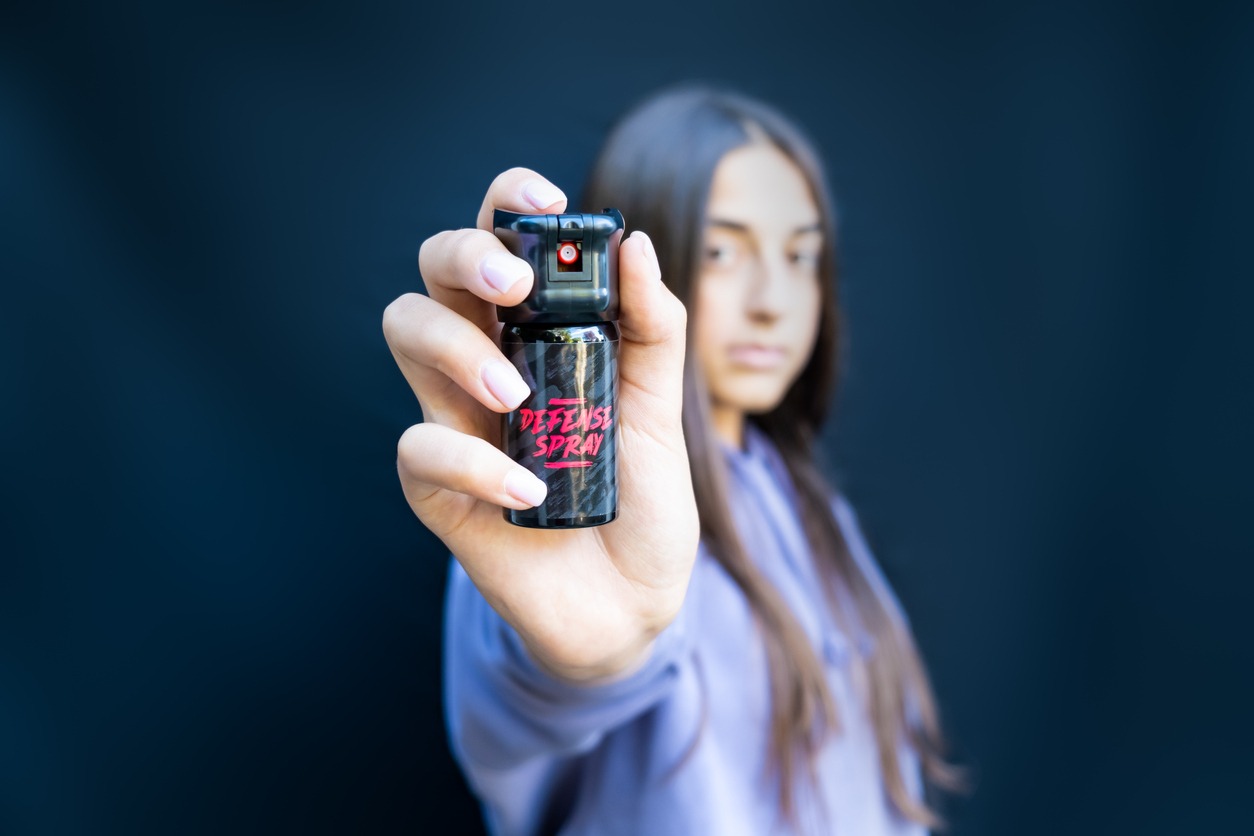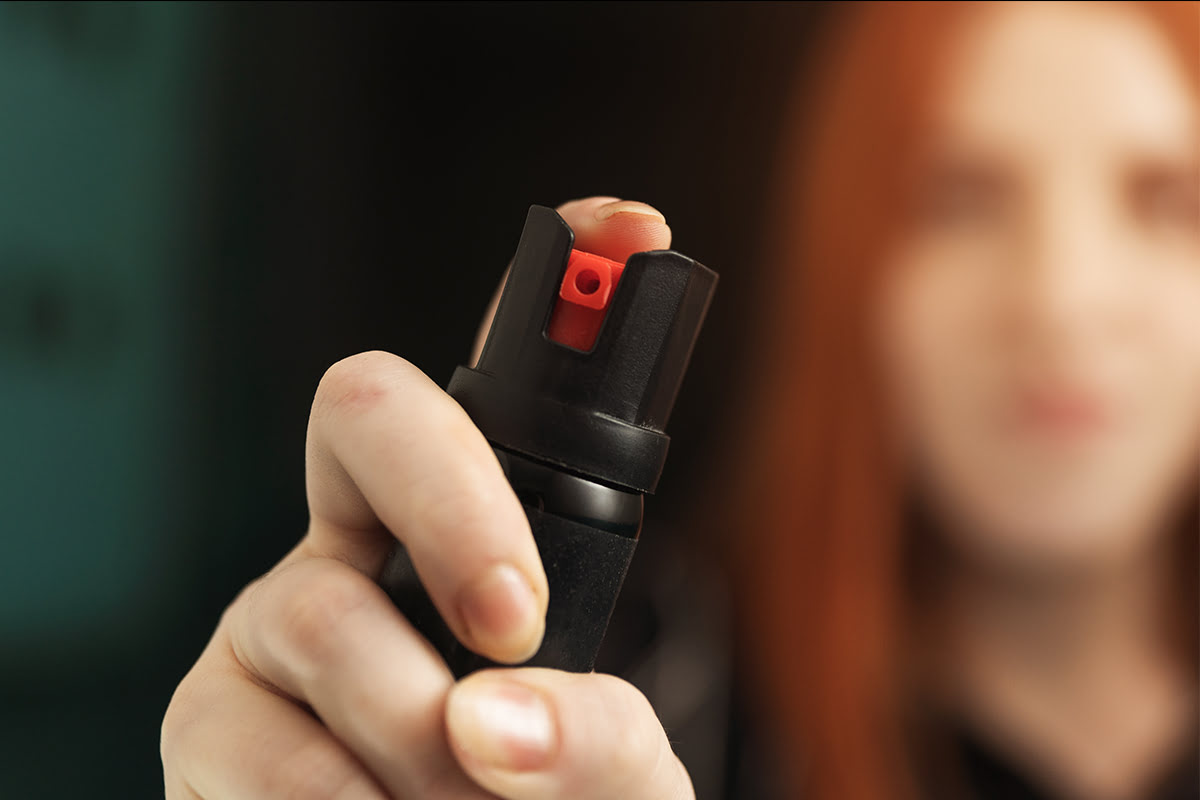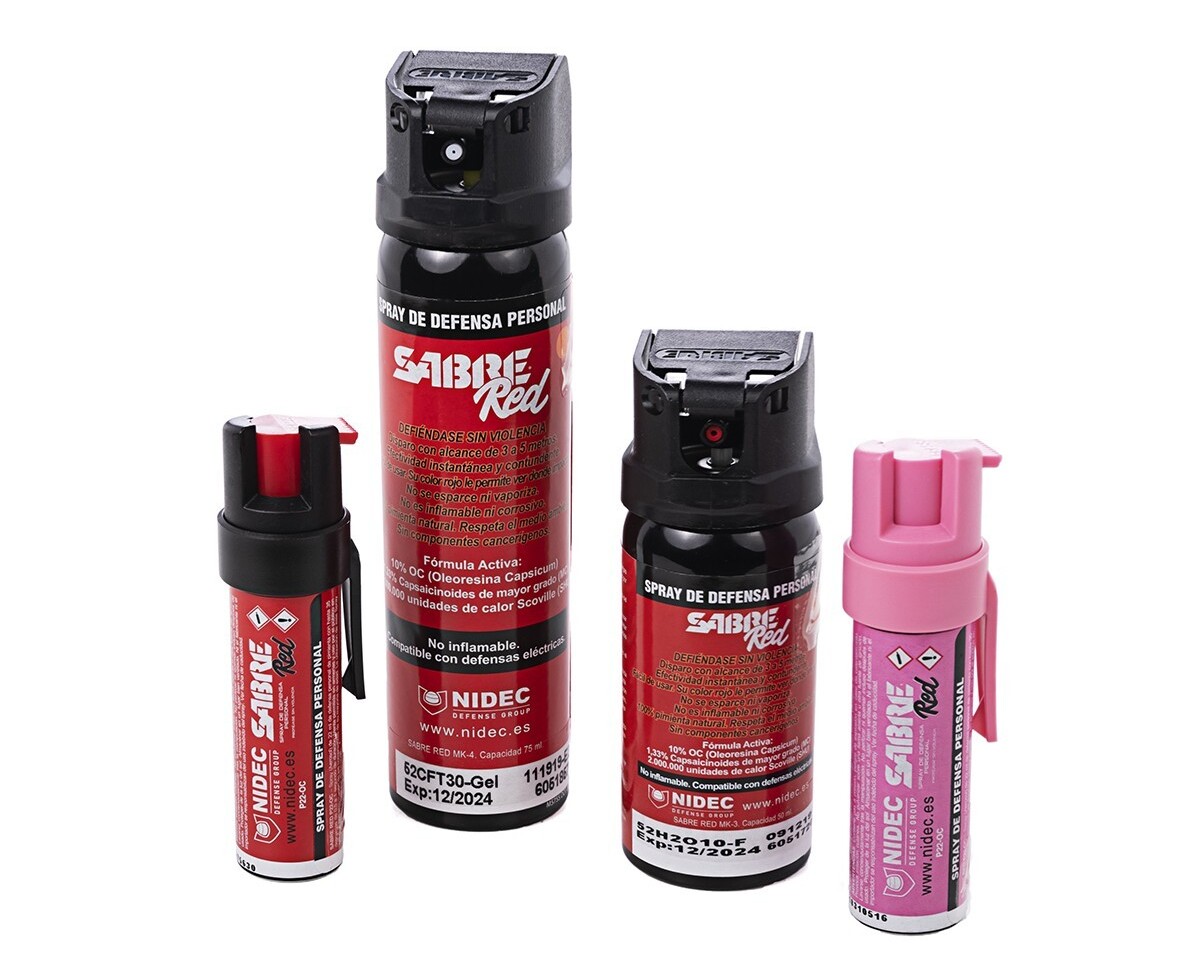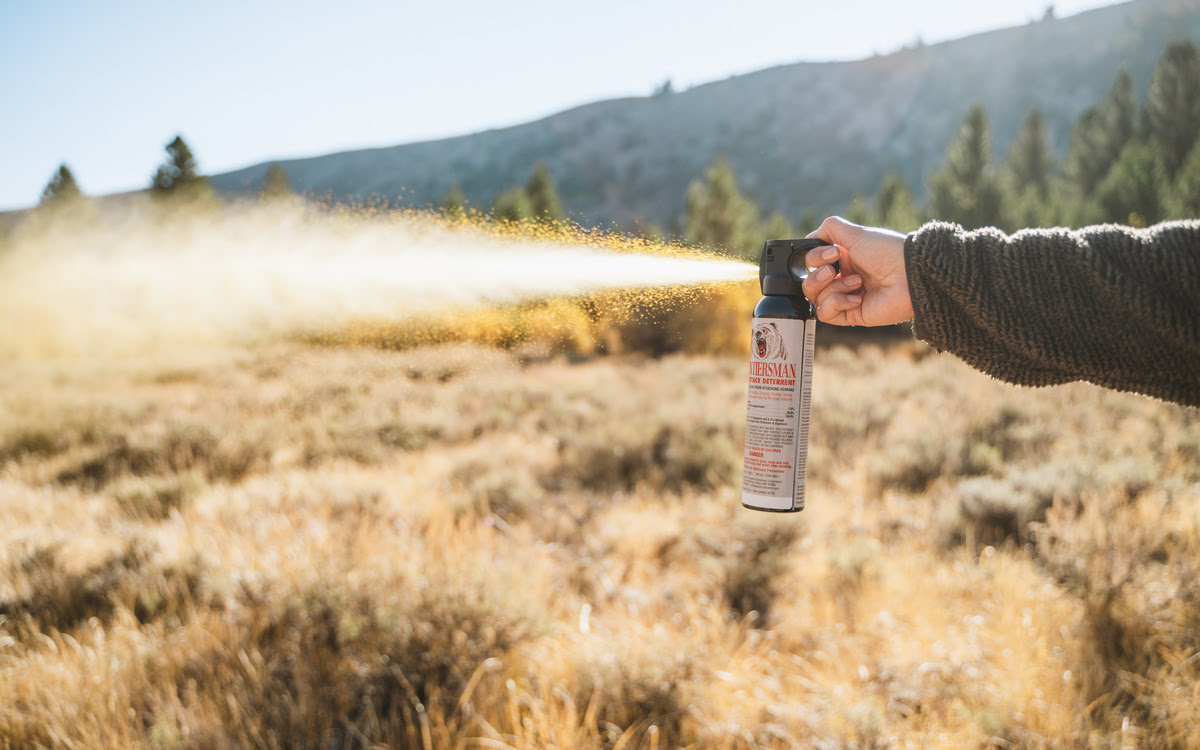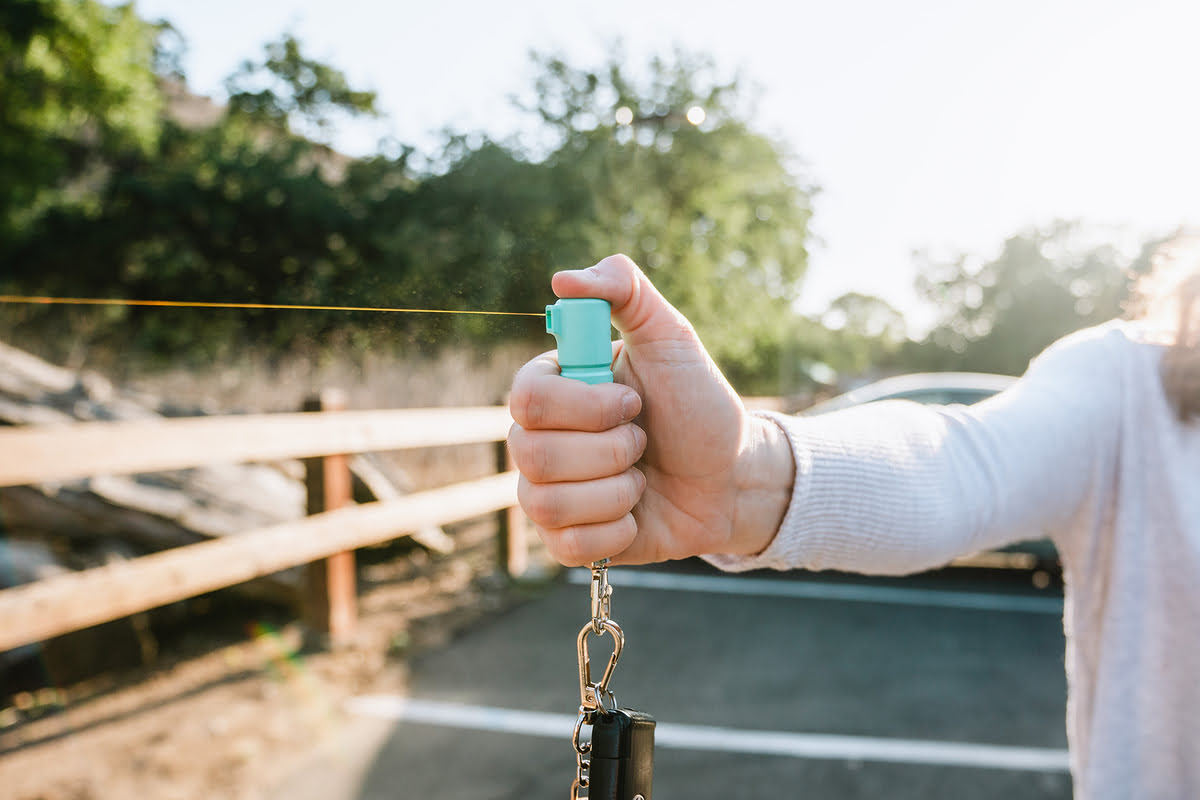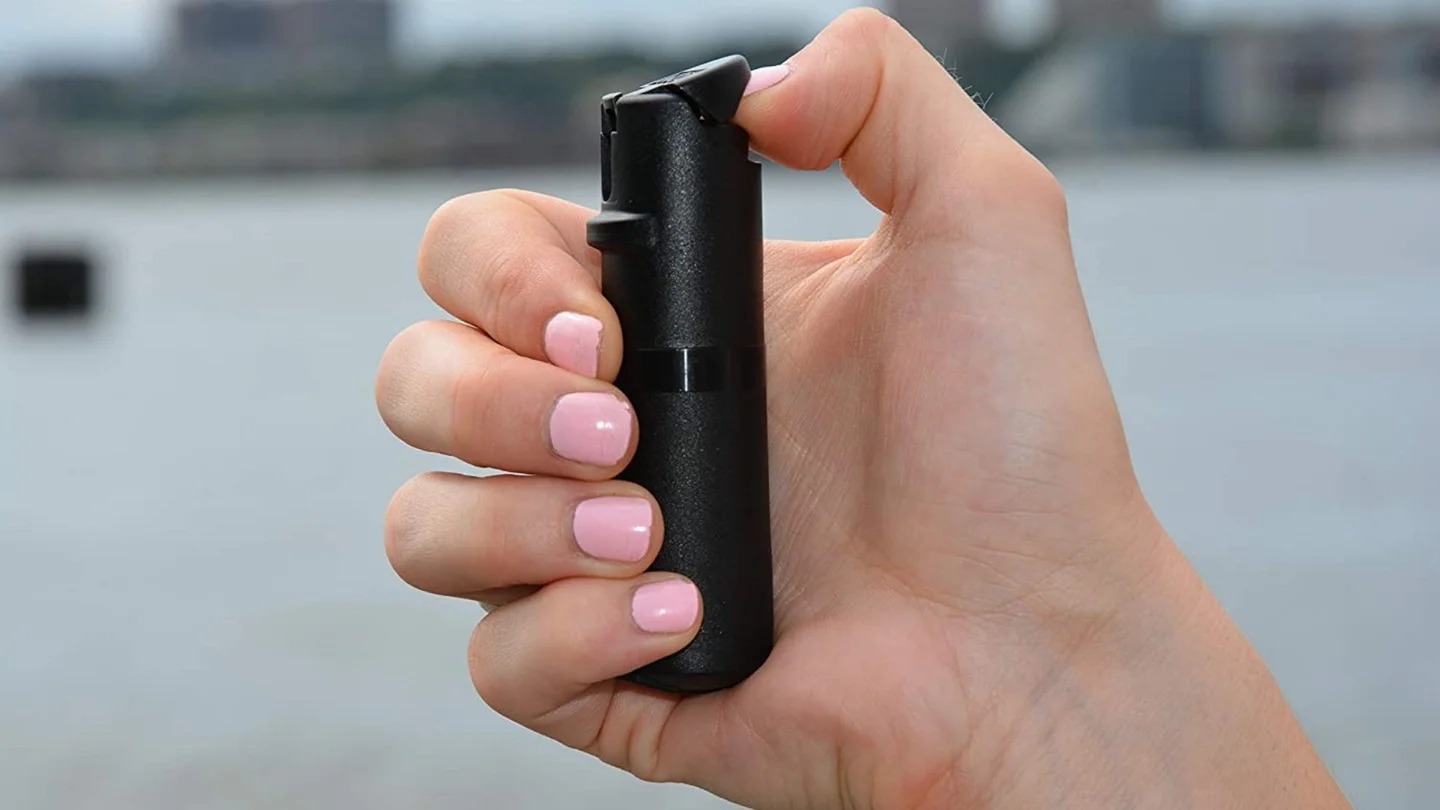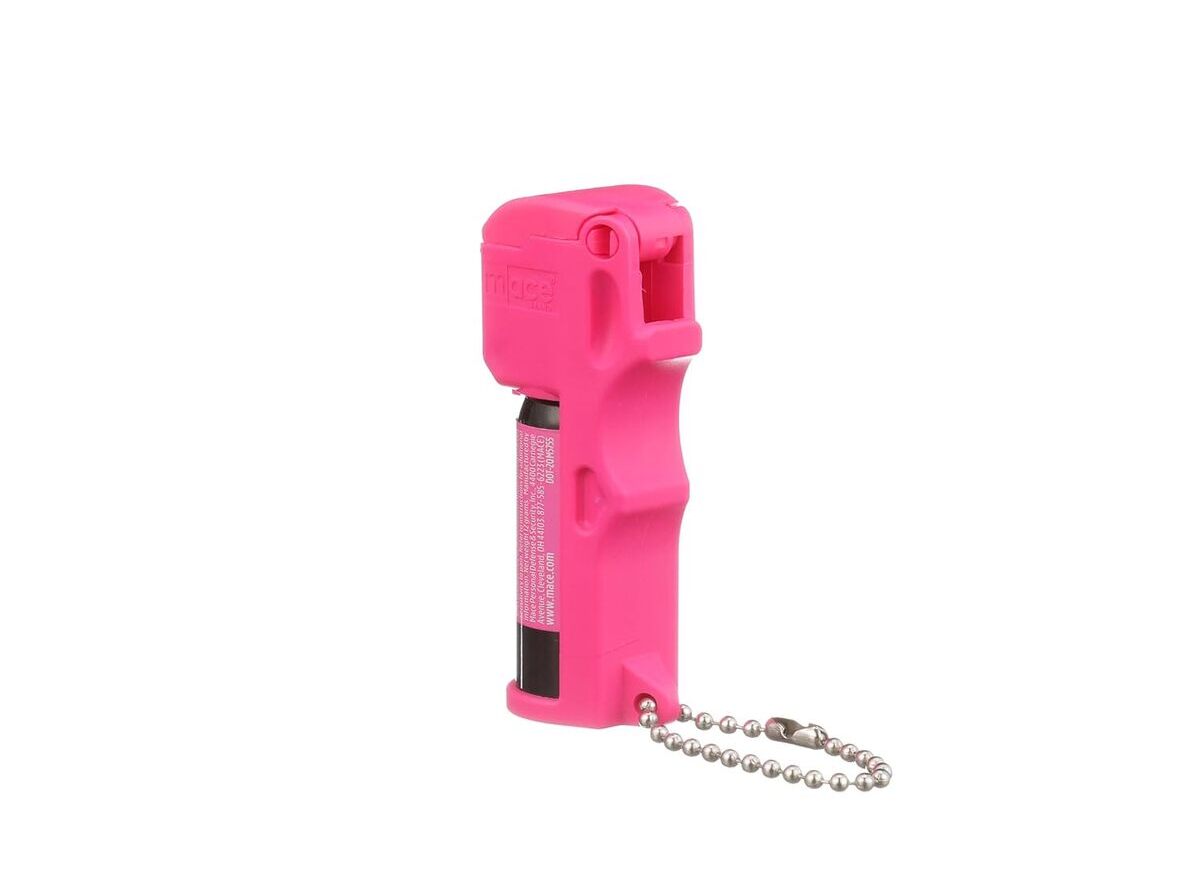Home>Home Security and Surveillance>What Pepper Is Used In Pepper Spray
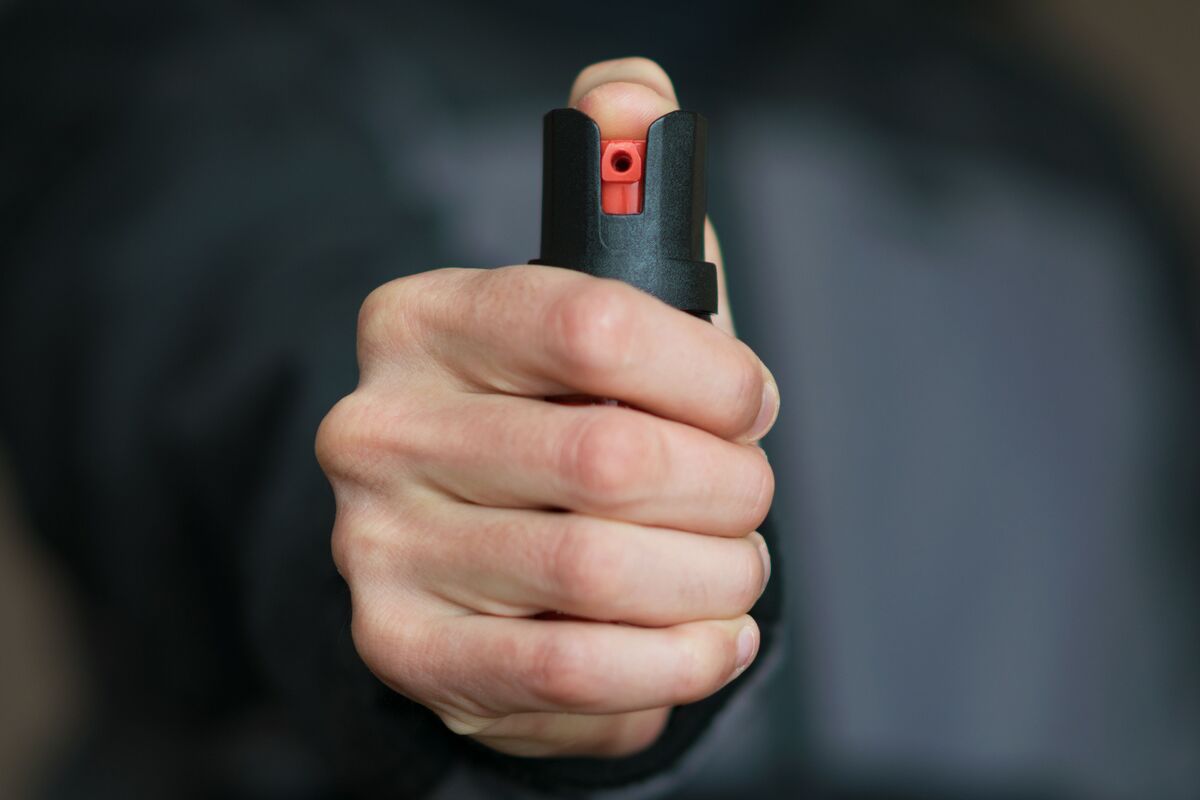

Home Security and Surveillance
What Pepper Is Used In Pepper Spray
Modified: March 24, 2024
Discover the key ingredient used in pepper spray for home security and surveillance. Learn about the potent pepper that makes this self-defense tool so effective.
(Many of the links in this article redirect to a specific reviewed product. Your purchase of these products through affiliate links helps to generate commission for Storables.com, at no extra cost. Learn more)
Introduction
When it comes to personal safety and home security, pepper spray is a popular choice for many individuals. This non-lethal self-defense tool has gained widespread recognition for its effectiveness in deterring potential attackers. But have you ever wondered what pepper is used in pepper spray? In this article, we will delve into the world of pepper spray and explore the different types of peppers used in its formulation.
Pepper spray, also known as OC spray (oleoresin capsicum), is a chemical compound derived from various types of peppers. It is widely used by law enforcement agencies, security personnel, and individuals seeking personal protection. The primary purpose of pepper spray is to incapacitate an attacker temporarily, giving the victim a chance to escape or seek help.
Pepper spray works by causing severe irritation and inflammation to the mucous membranes of the eyes, nose, and throat. The active ingredient in pepper spray, capsaicin, affects the nerve receptors in these areas, leading to intense pain, tearing, coughing, and difficulty breathing. This debilitating effect can last for up to 45 minutes, providing enough time for the victim to safely distance themselves from the assailant.
There are several different types of pepper spray available on the market, each with its unique formulation and intensity. These range from personal-sized canisters for individual use to larger canisters used by law enforcement agencies. While the effectiveness of pepper spray largely depends on the concentration of the active ingredient, the type of pepper used in the formulation also plays a significant role.
The active ingredient in pepper spray, capsaicin, is derived from various pepper varieties. These peppers contain capsaicinoids, natural chemical compounds responsible for the fiery hot sensation. Capsaicinoids are measured in Scoville Heat Units (SHU), which determines the strength and intensity of the pepper spray.
In the following sections, we will explore the different natural pepper varieties used in pepper spray formulations, as well as the common pepper varieties found in commercially available products. By understanding the types of peppers used in pepper spray, you will gain a deeper appreciation for this potent self-defense tool and its origins.
Key Takeaways:
- Pepper spray contains capsaicin derived from peppers like habanero, jalapeno, and cayenne, causing temporary incapacitation by irritating the eyes, nose, and throat.
- Different types of pepper spray, from keychain to law enforcement, offer versatile self-defense options, but responsible and legal use is essential for personal safety.
Read more: What To Use Instead Of Pepper Spray
What is Pepper Spray?
Pepper spray, also known as OC spray (oleoresin capsicum), is a non-lethal self-defense tool designed to incapacitate an attacker temporarily. It is widely used by individuals seeking personal protection, as well as law enforcement agencies and security personnel. The main purpose of pepper spray is to create a strong, immediate, and temporary disabling effect on the attacker, allowing the victim to escape or seek help.
Pepper spray is typically housed in a small canister equipped with a nozzle for easy deployment. When sprayed, it releases a fine mist or spray containing the active ingredient, capsaicin. Capsaicin is a naturally occurring chemical compound found in peppers that is responsible for their spicy heat. This powerful substance is what gives pepper spray its debilitating effects on the attacking individual.
When pepper spray comes into contact with the eyes, nose, or throat, it causes intense irritation, inflammation, and pain. The capsaicin affects the nerve receptors in these sensitive areas, leading to immediate physical reactions. The eyes will start tearing profusely, the nose will become congested, and the throat may experience difficulty in breathing and swallowing. These effects are temporary but can last anywhere from 20 minutes to an hour, depending on the concentration of capsaicin in the pepper spray formulation.
Pepper spray is designed to be effective even against individuals who are under the influence of drugs or alcohol, as it primarily targets the sensory systems rather than relying on pain receptors. This makes it an ideal self-defense option for individuals who may be at a physical disadvantage or those seeking a non-lethal alternative to firearms.
While pepper spray is widely available for public use, it is essential to understand the legal restrictions and regulations regarding its possession and use in your jurisdiction. Laws may vary from country to country or even within different states, so it’s crucial to familiarize yourself with the specific regulations in your area.
Pepper spray should be used responsibly and only in situations where there is a genuine threat to personal safety. It is not a toy or a means to intimidate others. Misuse, particularly in non-emergency situations, may have legal repercussions.
Overall, pepper spray is a highly accessible and effective self-defense tool that provides an opportunity for individuals to protect themselves and create a safer environment. Its non-lethal nature and ease of use make it a popular choice for personal safety and home security.
How Does Pepper Spray Work?
Pepper spray is a powerful tool that relies on the active ingredient capsaicin to incapacitate an attacker. Understanding how pepper spray works can help you better grasp its effectiveness as a self-defense tool.
When pepper spray is deployed, it releases a fine mist or spray containing capsaicin, the active ingredient derived from various pepper varieties. The capsaicin affects the nerve receptors in the eyes, nose, and throat, causing intense irritation and pain. The primary mechanisms through which pepper spray works are sensory overload and inflammation.
When the mist or spray comes into contact with the eyes, it immediately irritates the delicate membranes, leading to a burning sensation, uncontrollable tearing, and temporary vision impairment. The capsaicin affects the pain receptors in the eyes, causing intense discomfort. This effect can be disorienting and overwhelming for the attacker, giving the victim an opportunity to escape or seek assistance.
In addition to the eyes, the capsaicin also targets the nose and throat. When inhaled, it irritates the nasal passages, leading to congestion and difficulty in breathing. The throat may also experience inflammation, making it painful to swallow. These effects further incapacitate the attacker, making it challenging for them to continue their assault.
The intensity of the pepper spray’s effect depends on the concentration of capsaicin in the formulation. The Scoville Heat Units (SHU) measure the strength of capsaicinoids, with higher SHU values indicating a more potent pepper spray. The higher the concentration of capsaicin, the greater the impact on the attacker.
It’s important to note that while pepper spray is effective, its effectiveness may be influenced by factors such as distance, wind, and accuracy of deployment. To maximize its effectiveness, it is crucial to aim for the attacker’s face, specifically targeting the eyes, nose, and mouth.
One key advantage of pepper spray is its ability to incapacitate an attacker without causing any long-term harm or permanent damage. The effects of pepper spray are temporary and typically last between 20 minutes to an hour, depending on the concentration and individual tolerance.
Overall, pepper spray’s efficacy lies in its ability to overwhelm the senses, causing intense pain, inflammation, and temporary incapacitation. It serves as a valuable non-lethal self-defense tool, empowering individuals to protect themselves in dangerous situations.
Types of Pepper Spray
Pepper spray comes in various types, each catering to different needs and preferences. From small, portable canisters for personal use to larger canisters designed for law enforcement, here are some of the main types of pepper spray available:
- Keychain Pepper Spray: This type of pepper spray is compact and conveniently attached to a keychain, making it easily accessible and portable. Keychain pepper sprays are popular among individuals who want to carry a self-defense tool discreetly.
- Personal Pepper Spray: Personal pepper sprays typically come in a handheld canister with a safety mechanism. They are small enough to fit in a pocket or purse and provide individuals with a means of protection in potentially dangerous situations.
- Specialty Pepper Spray: Specialty pepper sprays are designed for specific purposes. This can include pepper spray disguised as everyday objects such as pens, lipsticks, or even rings. These covert options offer an element of surprise to catch an attacker off-guard.
- Home Defense Pepper Spray: Home defense pepper sprays are larger canisters with a higher volume of spray. These are typically kept at home and used for protection in the event of a break-in or intruder. Their range and coverage make them effective for defending larger spaces.
- Law Enforcement Pepper Spray: Pepper spray formulated for law enforcement is often stronger and has a higher concentration of capsaicin compared to personal-sized canisters. These are typically used by police officers and security personnel to control and disperse unruly crowds or subdue suspects.
It’s important to note that the laws and regulations regarding the purchase, possession, and use of specific types of pepper spray may vary in different jurisdictions. It’s essential to familiarize yourself with the local laws and restrictions before acquiring pepper spray.
Furthermore, it is crucial to consider factors such as spray pattern, range, and number of shots when choosing a pepper spray. Common spray patterns include stream, cone, and fog. The range refers to how far the spray can reach, ranging from a few feet to several yards. The number of shots indicates how many times the pepper spray can be deployed before needing a refill or replacement.
By understanding the different types of pepper spray available, you can select the one that best suits your needs and personal preferences. Whether you need a compact and discreet option for everyday carry or a larger canister for home defense, pepper spray provides a versatile and effective self-defense tool for individuals of all backgrounds.
The pepper used in pepper spray is called oleoresin capsicum (OC), which is derived from hot peppers like cayenne and jalapeño. OC is an irritant that causes burning, pain, and inflammation when it comes into contact with the eyes, skin, or respiratory system.
The Active Ingredient in Pepper Spray
The active ingredient in pepper spray that gives it its potent and disabling effects is capsaicin. Capsaicin is a naturally occurring chemical compound found in various types of peppers, mainly from the Capsicum genus. It is the component responsible for the fiery heat sensation experienced when consuming spicy foods.
Capsaicin works by directly affecting the nerve receptors, particularly those responsible for sensing pain and heat. When pepper spray is sprayed on an individual, capsaicin binds to the pain receptors in the eyes, nose, and throat, causing a series of physiological responses.
Upon contact with the eyes, capsaicin triggers immediate dilation of the blood vessels, leading to increased blood flow. This results in a burning sensation, redness, and tearing. The excessive tearing is the body’s natural response to flush out the irritant and protect the eyes. The capsaicin also stimulates the receptors responsible for sensing temperature, creating a sensation of intense heat.
In the nasal passages, capsaicin causes inflammation, resulting in congestion and difficulty in breathing. It can also trigger sneezing and coughing as the body tries to expel the irritant. In the throat, it can lead to a feeling of tightness or difficulty swallowing.
The effects of capsaicin are temporary, typically lasting anywhere from 20 minutes to an hour, depending on the concentration and individual tolerance. It is important to note that while the effects of pepper spray can be extremely uncomfortable and disorienting, they are not typically life-threatening or cause long-term damage.
The concentration of capsaicin in pepper spray is measured in Scoville Heat Units (SHU), which determines the strength and intensity of the pepper spray. The higher the SHU value, the more capsaicin is present, and the more potent the pepper spray becomes.
Pepper spray formulations with lower concentrations of capsaicin are commonly used for personal self-defense, as they provide sufficient incapacitation for most situations without causing excessive harm. On the other hand, pepper sprays with higher concentrations of capsaicin are often used by law enforcement and security personnel when dealing with more aggressive or resistant individuals.
It’s important to note that individuals may have different sensitivities to capsaicin, and some may be more tolerant to its effects than others. Additionally, certain medical conditions or allergies might affect an individual’s reaction to capsaicin. It is always advised to consult a healthcare professional before using pepper spray, especially if you have any underlying health concerns.
By understanding the active ingredient in pepper spray, individuals can better comprehend its effects and make informed decisions regarding their personal safety. Whether it’s for personal use or employed by professionals, pepper spray’s effectiveness relies on the powerful compound capsaicin.
Read more: What Pepper Spray Do Police Use
Natural Pepper Varieties Used in Pepper Spray
Pepper spray, as the name suggests, is derived from various pepper varieties. These natural pepper varieties contain capsaicin, the active ingredient responsible for the potent effects of pepper spray. Here are some of the natural pepper varieties commonly used in pepper spray formulations:
- Habanero Peppers: Known for their intense heat, habanero peppers (Capsicum chinense) are a popular choice for pepper spray manufacturers. These small, lantern-shaped peppers have a Scoville Heat Unit (SHU) rating ranging from 100,000 to 350,000, making them one of the hottest pepper varieties. Habanero peppers provide a strong and immediate burning sensation when used in pepper spray formulations.
- Jalapeno Peppers: Jalapeno peppers (Capsicum annuum) are medium-sized peppers with a heat level ranging from mild to moderate. With SHU ratings typically between 2,500 to 8,000, jalapeno peppers offer a more manageable level of heat compared to habanero peppers. They are often used in pepper spray formulations for everyday personal self-defense.
- Cayenne Peppers: Cayenne peppers (Capsicum annuum) are long, slender peppers with a heat level similar to jalapenos. They have a range of SHU ratings, usually between 30,000 to 50,000. Cayenne peppers are commonly used in pepper spray formulations due to their availability and consistent heat potency.
- Ghost Peppers: Also known as Bhut Jolokia (Capsicum chinense), ghost peppers are one of the hottest pepper varieties in the world. With SHU ratings reaching up to 1,000,000, ghost peppers provide an intense burning sensation. While less commonly used in commercial pepper spray formulations due to their extreme heat, ghost peppers may be found in specialized or high-concentration pepper sprays.
- Scotch Bonnet Peppers: Scotch bonnet peppers (Capsicum chinense) are a Caribbean favorite known for their fruity flavor and high heat level. They have a similar heat profile to habanero peppers, ranging from 100,000 to 350,000 SHU. Scotch bonnet peppers are occasionally used in pepper spray formulations but are less prevalent compared to other varieties.
It’s important to note that the selection of natural pepper varieties depends on factors such as heat level, availability, and regional preferences. Different manufacturers may choose to use specific pepper varieties based on their desired formulation and target market.
The concentration of capsaicin in the pepper spray formulation determines its effectiveness. Manufacturers carefully measure and balance the amount of capsaicin from these natural pepper varieties to create a spray that provides a strong and temporary incapacitating effect. It’s worth noting that the concentration of capsaicin in commercially available pepper sprays may vary depending on legal requirements and the specific intended use, whether for personal defense or law enforcement purposes.
By understanding the natural pepper varieties used in pepper spray, individuals can gain a deeper appreciation for the potency and range of effects this self-defense tool can provide. The choice of pepper varieties contributes to the overall efficacy and heat intensity of the pepper spray formulation.
Common Pepper Varieties Used in Pepper Spray
Pepper spray formulations often consist of a combination of natural pepper varieties, carefully chosen to create an effective and potent self-defense tool. While the specific selection may vary depending on the manufacturer and formulation, here are some of the common pepper varieties commonly used in pepper sprays:
- Cayenne Peppers: Cayenne peppers (Capsicum annuum) are a staple ingredient in many pepper spray formulations. These elongated, medium-sized peppers provide a consistent and manageable level of heat, typically ranging from 30,000 to 50,000 Scoville Heat Units (SHU). Cayenne peppers are readily available and widely used due to their reliability and effectiveness.
- Jalapeno Peppers: Jalapeno peppers (Capsicum annuum) are another popular choice in pepper spray formulations. These medium-sized peppers offer moderate heat, typically ranging from 2,500 to 8,000 SHU. Jalapenos provide a good balance of effectiveness and user tolerance, making them suitable for personal self-defense pepper sprays.
- Habanero Peppers: Habanero peppers (Capsicum chinense) are favored for their intense heat and distinct flavor. They have a high SHU rating, ranging from 100,000 to 350,000, making them one of the hottest pepper varieties used in pepper spray. Habanero peppers add a powerful punch to the formulation, ensuring a significant effect on potential attackers.
- Pepper Extracts: In addition to natural pepper varieties, some pepper spray formulations may incorporate pepper extracts. These extracts, derived from super-hot pepper varieties like the ghost pepper or Carolina Reaper, contain concentrated levels of capsaicin. The use of pepper extracts allows for higher levels of heat potency in pepper spray formulations.
- Red Pepper: Red pepper is often used in pepper spray formulations, typically obtained from ripe cayenne peppers or other varieties. Red pepper provides both heat and color to the spray, making it easily distinguishable upon deployment. It contributes to the overall effectiveness and visual impact of the pepper spray.
It’s important to note that the exact combination and ratio of these pepper varieties may vary depending on the specific manufacturer and their desired formulation. The goal is to achieve a balance between heat intensity, reliability, and user tolerance. Pepper spray manufacturers conduct extensive research and testing to ensure the effectiveness and safety of their products.
When selecting a pepper spray for personal use, it’s essential to consider factors beyond just the type of pepper used. The concentration of capsaicin, spray pattern, range, and canister size are all crucial factors to consider based on your specific needs and intended use.
By understanding the common pepper varieties used in pepper spray, individuals can make informed decisions when selecting a self-defense tool that offers a combination of effectiveness, reliability, and personal safety.
Conclusion
Pepper spray is a widely recognized and effective self-defense tool that provides individuals with a non-lethal means of protection. Derived from various pepper varieties, pepper spray contains the active ingredient capsaicin, which incapacitates attackers temporarily by causing intense irritation and inflammation to the eyes, nose, and throat.
In this article, we explored what pepper is used in pepper spray, delving into the different types of peppers commonly used in its formulation. Natural pepper varieties such as habanero peppers, jalapeno peppers, cayenne peppers, ghost peppers, and scotch bonnet peppers offer a range of heat levels and intensities, allowing manufacturers to tailor their formulations to suit different needs and preferences.
We also discussed the active ingredient in pepper spray, capsaicin, and how it affects the nerve receptors to produce the burning sensation and temporary incapacitation. Understanding how pepper spray works provides insights into its effectiveness as a self-defense tool.
Moreover, we explored the various types of pepper spray available, including keychain pepper spray, personal pepper spray, specialty pepper spray, home defense pepper spray, and law enforcement pepper spray. Each type is designed for specific purposes and offers unique features to cater to different situations and user preferences.
Finally, we examined the common pepper varieties used in pepper spray, such as cayenne peppers, jalapeno peppers, habanero peppers, and pepper extracts. These varieties are carefully selected and combined to create formulations that balance heat intensity, reliability, and user tolerance.
Pepper spray is an accessible and effective self-defense tool that empowers individuals to protect themselves and create a safer environment. However, it is crucial to be aware of the laws and regulations surrounding its possession and use in your jurisdiction.
Remember, pepper spray should be used responsibly and only in situations that warrant self-defense. It is always recommended to familiarize yourself with proper usage techniques and consult local laws to ensure safe and legal use.
In conclusion, pepper spray is a valuable tool in personal safety and home security, offering a non-lethal option for deterring potential attackers. By understanding the different types of pepper spray, the active ingredient capsaicin, and the natural pepper varieties used in its formulation, individuals can make informed choices when selecting the right pepper spray for their personal needs and peace of mind.
Frequently Asked Questions about What Pepper Is Used In Pepper Spray
Was this page helpful?
At Storables.com, we guarantee accurate and reliable information. Our content, validated by Expert Board Contributors, is crafted following stringent Editorial Policies. We're committed to providing you with well-researched, expert-backed insights for all your informational needs.

